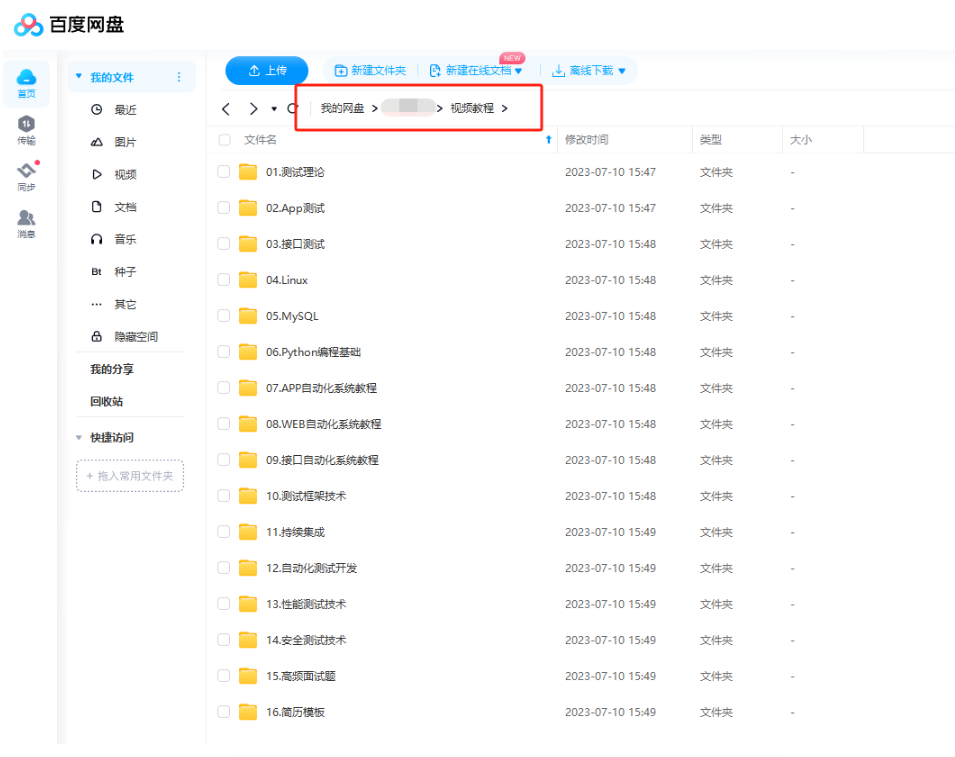Fixture参数详解及使用
Fixture的调用方式:
| 1 |
|
参数详解:
1、SCOPE
用于控制Fixture的作用范围
作用类似于Pytest的setup/teardown
默认取值为function(函数级别),控制范围的排序为:session > module > class > function
| 取值 | 范围 说明 |
|---|---|
| function | 函数级 每一个函数或方法都会调用 |
| class | 函数级 模块级 每一个.py文件调用一次 |
| module | 模块级 每一个.py文件调用一次 |
| session | 会话级 每次会话只需要运行一次,会话内所有方法及类,模块都共享这个方法 |
作用范围举例:
scope = “function”
语法:
| 1 2 3 |
|
场景一:做为参数传入
| 1 2 3 4 5 6 7 8 9 10 11 12 13 14 15 16 17 18 19 20 21 22 23 24 25 26 27 28 29 30 |
|
运行结果:

从运行结果可以看出,fixture做为参数传入时,会在执行函数之前执行该fixture函数。再将值传入测试函数做为参数使用,这个场景多用于登录
场景二、Fixture的相互调用
代码:
| 1 2 3 4 5 6 7 8 9 10 11 12 13 14 15 16 17 18 19 20 21 |
|
运行结果:

注:
1.即使fixture之间支持相互调用,但普通函数直接使用fixture是不支持的,一定是在测试函数内调用才会逐级调用生效
2.有多层fixture调用时,最先执行的是最后一层fixture,而不是先执行传入测试函数的fixture
3.上层fixture的值不会自动return,这里就类似函数相互调用一样的逻辑
scope = “class”:
**当测试类内的每一个测试方法都调用了fixture,fixture只在该class下所有测试用例执行前执行一次
**测试类下面只有一些测试方法使用了fixture函数名,这样的话,fixture只在该class下第一个使用fixture函数的测试用例位置开始算,后面所有的测试用例执行前只执行一次。而该位置之前的测试用例就不管。
语法
| 1 |
|
场景一、
| 1 2 3 4 5 6 7 8 9 10 11 12 13 14 15 16 17 |
|
运行结果:

场景二、
| 1 2 3 4 5 6 7 8 9 10 11 12 13 14 15 16 17 18 19 20 21 |
|
运行结果:

scope = “module”:与class相同,只从.py文件开始引用fixture的位置生效
| 1 2 3 4 5 6 7 8 9 10 11 12 13 14 15 16 17 18 19 20 21 22 23 24 25 26 27 |
|
运行结果:

scope = “session”:用法将在conftest.py文章内详细介绍
session的作用范围是针对.py级别的,module是对当前.py生效,seesion是对多个.py文件生效
session只作用于一个.py文件时,作用相当于module
所以session多数与contest.py文件一起使用,做为全局Fixture
2、params:
Fixture的可选形参列表,支持列表传入
默认None,每个param的值
fixture都会去调用执行一次,类似for循环
可与参数ids一起使用,作为每个参数的标识,详见ids
被Fixture装饰的函数要调用是采用:Request.param(固定写法,如下图)
举个栗子:

3、ids:
用例标识ID
与params配合使用,一对一关系
举个栗子:
未配置ids之前,用例:

配置了IDS后:

4、autouse:
默认False
若为True,刚每个测试函数都会自动调用该fixture,无需传入fixture函数名
由此我们可以总结出调用fixture的三种方式:
1.函数或类里面方法直接传fixture的函数参数名称
2.使用装饰器@pytest.mark.usefixtures()修饰
3.autouse=True自动调用,无需传仍何参数,作用范围跟着scope走(谨慎使用)
让我们来看一下,当autouse=ture的效果:

5、Name:
fixture的重命名
通常来说使用 fixture 的测试函数会将 fixture 的函数名作为参数传递,但是 pytest 也允许将fixture重命名
如果使用了name,那只能将name传如,函数名不再生效
调用方法:@pytest.mark.usefixtures(‘fixture1’,‘fixture2’)
举栗:
| 1 2 3 4 5 6 7 8 9 10 11 12 |
|
运行结果:

现在我也找了很多测试的朋友,做了一个分享技术的交流群,共享了很多我们收集的技术文档和视频教程。
如果你不想再体验自学时找不到资源,没人解答问题,坚持几天便放弃的感受
qq群号:485187702【暗号:csdn11】
可以加入我们一起交流。而且还有很多在自动化,性能,安全,测试开发等等方面有一定建树的技术大牛
分享他们的经验,还会分享很多直播讲座和技术沙龙
可以免费学习!划重点!开源的!!!
视频+文档+PDF+面试题可以关注公众号:【软件测试小dao】最后感谢每一个认真阅读我文章的人,看着粉丝一路的上涨和关注,礼尚往来总是要有的,虽然不是什么很值钱的东西,如果你用得到的话可以直接拿走! 希望能帮助到你!【100%无套路免费领取】
























 766
766

 被折叠的 条评论
为什么被折叠?
被折叠的 条评论
为什么被折叠?








